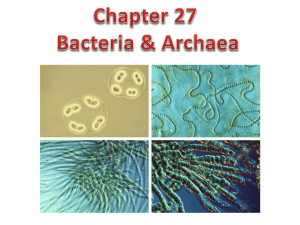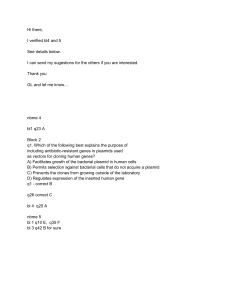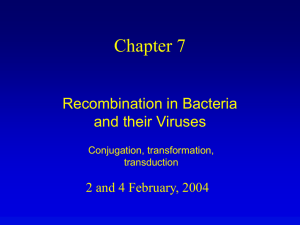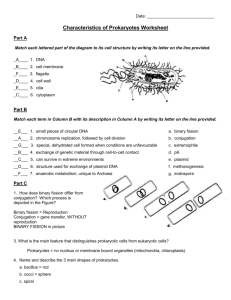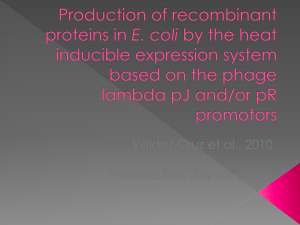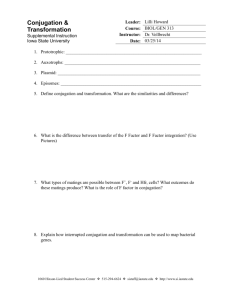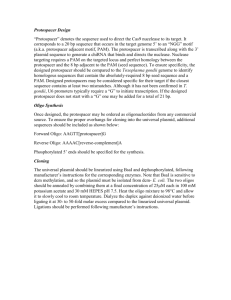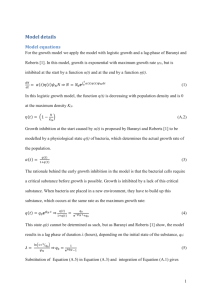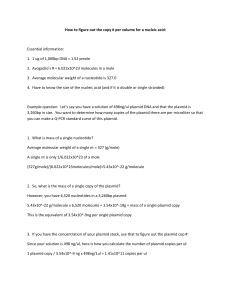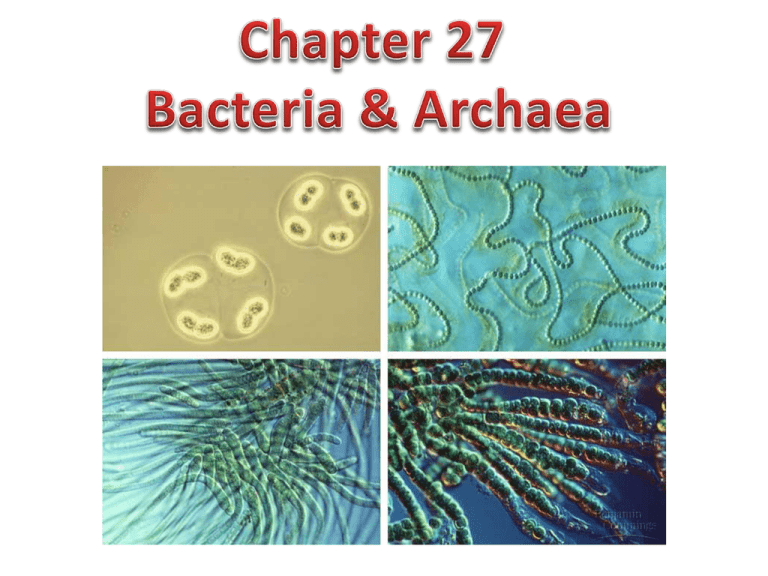
How do bacterial cell walls differ from plant cell walls?
Plants – made of cellulose (polysaccharide)
Bacteria – made of peptidoglycan
Archaea – lack peptidoglycan, made of a variety of
polysaccharides and proteins
Simpler cell wall, large
amounts of peptidoglycan
More complex, less
peptidoglycan, outer layer of
lipopolysaccharides
Capsule – sticky layer of polysaccharide or protein covering the cell wall
of many prokaryotes
enables them to adhere to substrate
or other cells (colony)
prevent dehydration
protects from host’s immune system
Fimbriae – hair-like protein appendages
(aka “attachment pili”)
Sex pili – appendages that pull two cells
together prior to DNA transfer from one
cell to the
other.
Bacteria Locomotion
Flagella
Slimmer than Eukaryotic flagella
Not covered by plasma membrane as Eukaryotic flagella a
Different molecular composition and Eukaryotic flagella
Mechanism of propulsion is different than Eukaryotic
Taxis – movement towards or away from a stimulus
Positive taxis – towards stimulus
Negative taxis – away from stimulus
Examples:
Chemotaxis
Phototaxis
Transformation – pGLO lab – genotype and
possibly phenotype is changed by the uptake
of foreign DNA from its surroundings.
pGLO
Griffins experiment
Transduction – Bacteriophages (viruses) carry
bacterial genes from one host cell to another
(accidents during viral replication)
Conjugation – DNA transfer from
one bacterial cell to another
(same or different species)
Binary Fission – asexual
reproduction of bacteria
What is the difference between and F plasmid and an R plasmid?
F plasmid – contains genes that enable cell to form a “mating
bridge” with a cell that does not have the plasmid.
R plasmid – contains genes that make it resistant to antibiotics
What is the difference between F+ cells and F- cells?
F+ cells contain the F plasmid and therefore are donors during
conjugation
F- cells do not contain the F plasmid and therefore are recipients
during conjugation
Questions from 27.2 pg. 564
1. What features of prokaryotes make it likely that considerable genetic
variation will be added to their populations in each generation?
Large population size (more likely that more individuals will have new mutations at
any particular gene…adding diversity)
Short generation time.
2. Distinguish between the three mechanisms of transferring DNA from
one bacterial cell to another.
Transformation
Transduction
Conjugation
3. If a nonpathogenic bacterium were to acquire resistance to
antibiotics, could this strain pose a health risk to people? Explain.
Yes. Genes for antibiotic resistance could be transferred from the nonpathogenic
bacterium to a pathogenic bacterium, which could then harm the population.
(MRSA). The processes listed in #2 increase the spread of resistance genes.
Photoautotroph
Energy source is light
vs.
Photoheterotroph
vs.
Energy source is light
but obtain carbon in organic form
Chemoautotroph
Energy source is inorganic
compounds (H2S or NH3)
Chemoheterotrophs
Energy source is organic
compounds and obtain
carbon in organic form
(animals, fungi, and most
protists)
The role of Oxygen in metabolism
1. Obligate Aerobes – use O2 for CR, can’t live wo/it
2. Obligate Anaerobes – poisoned by O2, some live by
fermentation while others go through anaerobic respiration
using nitrate ions or sulfate ions
3. Facultative Anaerobes – use O2 if it is present but can also
carry out anaerobic respiration or fermentation if needed
Nitrogen fixation – converting atmospheric nitrogen to ammonia (NH3)
Benefit: can then use ammonia to make amino acids and nucleotides
Filamentous colonies – cooperation between the same species
majority of cells in the colony carry out photosynthesis
there are a few cells (“heterocytes”) that carry out nitrogen fixation (have a thicker cell wall to
keep O2 out)
cells can’t do both because the O2 inactivates the enzymes involved in nitrogen fixation.
products from both reactions get transported via intercellular connections between the cells
Biofilms – cooperation between different species
cells in colony secrete signaling molecules that recruit nearby cell.
cells also produce proteins that stick the cells together and to a substrate.
channels wi/biofilm allow nutrients and waste to be transported
Causes of tooth decay, damage to industrial
and medical equipment, contamination of
products
Ecological Significance of Prokaryotes:
Recycling:
Symbiosis:
Pathogens:
Bioremediation:
Genetic Engineering
Identify 2 ways Prokaryotes have affected you positively today…

